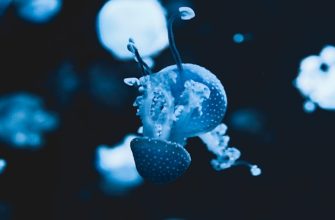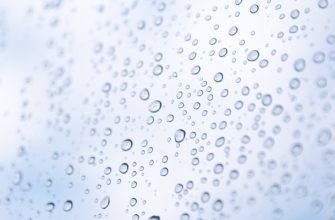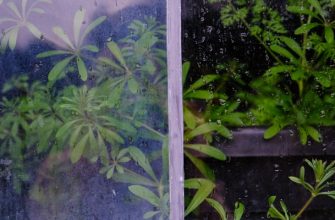- Revolutionizing Clean Air: The Evolution of Air Purification Technologies
- From Mechanical Filters to Ionization: A Comprehensive Overview
- The Science Behind Air Purifiers: How Innovations Enhance Indoor Air Quality
- Emerging Technologies in Air Purification: What’s Next for Clean Air Solutions?
- Comparing Traditional Filters and Ion-Based Systems: Effectiveness and Efficiency
- The Future of Air Purification: Integrating Smart Technology for Healthier Environments
Revolutionizing Clean Air: The Evolution of Air Purification Technologies
Air purification technologies have undergone significant transformation over the years, making strides towards providing cleaner and healthier indoor environments. The evolution of air purification methods has incorporated advanced scientific research and technological innovations, resulting in efficient solutions that combat indoor air pollution.
Initially, air purification relied heavily on mechanical filters that physically trap dust, pollen, and other particulate matter. These filters, while effective, often required frequent replacement and maintenance, leading to concerns about their long-term sustainability. As awareness of air quality issues grew, so did the demand for more sophisticated air purification technologies.
One of the major advancements in air purification is the introduction of activated carbon filters. These filters use a process called adsorption to capture odors, gases, and volatile organic compounds (VOCs), providing a more comprehensive approach to air cleaning. They are often combined with HEPA filters, which excel at removing microscopic particles, enhancing overall air quality.
- HEPA Filters: High-Efficiency Particulate Air (HEPA) filters are designed to trap 99.97% of particles as small as 0.3 microns, making them essential in modern air purification systems.
- Activated Carbon Filters: These filters are crucial for eliminating unwanted odors and harmful gases, ensuring that the air remains fresh and safe.
- Ionizers: Air ionization technology has emerged as a promising solution. Ionizers emit negative ions that attach to airborne particles, causing them to clump together and fall to the ground, effectively reducing pollutants in the air.
- UV-C Light Purifiers: Ultraviolet (UV-C) light technology targets and neutralizes bacteria and viruses, providing an additional layer of protection against biological contaminants.
Moreover, smart air purifiers equipped with sensors and Wi-Fi connectivity have revolutionized how air quality is monitored and managed. These devices can adapt their filtration processes based on real-time air quality data, ensuring optimal performance and energy efficiency. The integration of mobile apps allows users to track air quality levels and control their purification systems remotely, promoting a proactive approach to indoor air safety.
As air purification technologies continue to advance, the focus remains on developing eco-friendly solutions that prioritize human health and environmental sustainability. The future of air purification lies in the combination of multiple technologies, creating synergistic effects that enhance air quality while minimizing energy consumption. This holistic approach is crucial in addressing the ever-growing concerns related to air pollution and its impact on public health.
From Mechanical Filters to Ionization: A Comprehensive Overview
In recent years, air purification technology has advanced significantly, moving from basic mechanical filters to more sophisticated methods such as ionization. Mechanical filters, often the first line of defense, effectively capture dust, pollen, and other particulates from the air. These filters, such as HEPA filters, are essential for maintaining indoor air quality, especially in environments where allergens and pollutants are prevalent.
- Mechanical Filters: These are designed to trap particulate matter using physical barriers. They are efficient in removing larger particles but may not eliminate smaller pollutants.
- Activated Carbon Filters: Utilizing porous carbon, these filters absorb odors and volatile organic compounds (VOCs), enhancing the air purification process.
- UV Light Purification: This method employs ultraviolet light to kill bacteria and viruses, thereby ensuring the air is not only filtered but also sanitized.
- Ionization Technology: Ionizers release charged ions into the air, which attach to particles, causing them to clump together and fall to the ground or be captured by filters.
As the demand for clean air grows, innovations in ionization technology have emerged. Ionization not only reduces airborne contaminants but also contributes to a healthier environment by neutralizing harmful pathogens. This technology complements traditional filtration systems, creating a multi-layered approach to air purification.
Furthermore, the integration of smart technology into air purifiers allows for real-time monitoring and adjustments based on air quality. Users can now benefit from automated systems that optimize purification processes, making air filters and ionization technologies more effective than ever before.
In conclusion, the journey from mechanical filters to ionization represents a significant leap in air purification technology. The combination of various methods ensures comprehensive air cleaning, addressing both particulate and gaseous pollutants efficiently. This evolution underscores the importance of investing in advanced air purification solutions to promote better health and well-being in indoor environments.
The Science Behind Air Purifiers: How Innovations Enhance Indoor Air Quality
The evolution of air purifiers has been significantly influenced by scientific advancements. These innovations have transformed the way indoor air quality is improved, making it essential for consumers to understand the technology behind these devices. Air purifiers utilize various methods to eliminate pollutants, allergens, and harmful particles from the air, enhancing overall health and well-being.
At the core of modern air purification systems are advanced filtration technologies. HEPA (High-Efficiency Particulate Air) filters are widely recognized for their ability to capture tiny particles, including dust, pollen, and pet dander. These filters can trap up to 99.97% of particles as small as 0.3 microns, significantly improving air quality in homes and offices.
Another key innovation in air purification is the use of activated carbon filters. These filters excel in removing odors and volatile organic compounds (VOCs) from the air. The porous structure of activated carbon allows it to adsorb harmful chemicals, making it an essential component in air purifiers designed for residential use.
- Ionization: Some air purifiers incorporate ionization technology, which releases negatively charged ions into the air. These ions attach to positively charged particles, causing them to clump together and fall to the ground or be captured by filters.
- UV-C Light: Ultraviolet light technology is another innovative approach. UV-C light can effectively kill bacteria, viruses, and mold spores, providing an additional layer of protection against airborne pathogens.
- Smart Technology: Recent advancements have introduced smart features in air purifiers, allowing users to monitor air quality in real-time. These devices can automatically adjust their filtration settings based on detected air quality levels, ensuring optimal purification.
Moreover, the integration of smart sensors and connectivity options in air purifiers has enhanced user experience. Users can track air quality through mobile applications, receive alerts, and control their devices remotely. This innovation not only improves convenience but also encourages proactive maintenance of indoor air quality.
In conclusion, the science behind air purifiers is rooted in innovative technologies that work together to enhance indoor air quality. From HEPA filters to ionization methods, each advancement plays a crucial role in creating a healthier living environment. Understanding these innovations enables consumers to make informed decisions when selecting air purification solutions that best suit their needs.
Emerging Technologies in Air Purification: What’s Next for Clean Air Solutions?
Emerging technologies in air purification are paving the way for innovative clean air solutions that promise to enhance indoor air quality significantly. The evolution of air purification systems has transitioned from traditional filters to advanced methods that incorporate various technologies, such as UV-C light, photocatalytic oxidation, and ionization.
Recent advancements in air purification focus on efficiency, effectiveness, and sustainability. The latest air purifiers utilize smart technology, allowing for real-time monitoring of air quality and automatic adjustments to purification levels. This integration of smart features not only optimizes performance but also enhances user convenience.
- Nanotechnology: This emerging field is revolutionizing air purification by creating materials that can capture smaller particles and pollutants, leading to cleaner air.
- Biotechnology: Innovative air purification systems are incorporating biological agents that can neutralize harmful substances, providing a more eco-friendly solution.
- Photocatalytic Materials: These materials can decompose organic pollutants when exposed to light, offering a sustainable method for maintaining air purity.
- Electrostatic Precipitators: These devices charge particles in the air, making them easier to capture and remove, enhancing air cleaning efficiency.
The future of clean air solutions is bright, with continuous research aimed at developing more effective air purification technologies. Enhanced filtration systems are expected to become more prevalent, utilizing multi-layer approaches that combine various purification techniques to target a broader spectrum of pollutants.
As the demand for better indoor air quality grows, the air purification industry is expected to witness a surge in innovations. With an emphasis on sustainable practices, next-generation air purifiers will likely integrate renewable energy sources, ensuring that clean air solutions are not only effective but also environmentally responsible.
In conclusion, the trajectory of air purification technology is set to redefine how indoor environments are maintained. The integration of emerging technologies will lead to more advanced, efficient, and sustainable air purification solutions, ultimately contributing to healthier living spaces.
Comparing Traditional Filters and Ion-Based Systems: Effectiveness and Efficiency
When evaluating air purification technologies, it is essential to compare traditional filters and ion-based systems. Both methods have their unique advantages and limitations, significantly impacting their effectiveness and efficiency in removing pollutants from indoor air.
- Effectiveness of Traditional Filters: Traditional filters, such as HEPA filters, are designed to physically trap particles, including dust, pollen, and pet dander. These filters can capture particles as small as 0.3 microns, making them highly effective for particulate matter removal.
- Effectiveness of Ion-Based Systems: Ion-based systems operate differently by releasing charged ions into the air, which attach to airborne particles. This process causes the particles to clump together and either fall to the ground or be captured by nearby surfaces, enhancing air quality.
- Efficiency of Traditional Filters: While traditional filters excel at particle capture, they require regular maintenance and replacement to maintain efficiency. Clogged filters may reduce airflow, resulting in decreased purification effectiveness.
- Efficiency of Ion-Based Systems: Ion-based air purifiers typically require less maintenance, as they do not rely on physical filters. However, their efficiency can be influenced by environmental factors, such as humidity and air circulation.
In terms of energy consumption, traditional filters may require more power to push air through the dense material, especially when filters are clogged. Conversely, ion-based systems often consume less energy, making them an attractive option for continuous use.
Cost is another crucial consideration. Traditional filter systems may have a higher initial investment due to the need for replacement filters, while ion-based systems tend to have lower ongoing costs. However, the long-term effectiveness of both methods should be evaluated based on specific air quality needs and conditions.
Ultimately, the choice between traditional filters and ion-based systems depends on individual preferences, air quality requirements, and maintenance willingness. Each method offers distinct benefits that can enhance indoor air quality, making informed decisions vital for effective air purification.
The Future of Air Purification: Integrating Smart Technology for Healthier Environments
The landscape of air purification is rapidly evolving, driven by the integration of smart technology that enhances the effectiveness of air cleaning systems. Innovative air purification solutions are no longer limited to traditional filters; they now incorporate advanced technologies that monitor, analyze, and improve indoor air quality in real-time. This shift toward smart air purification is transforming the way environments are maintained, providing users with healthier spaces.
Smart air purifiers utilize a combination of sensors, artificial intelligence, and connectivity features to optimize air quality management. These devices can detect pollutants and allergens, automatically adjusting their performance to ensure cleaner air. With the ability to connect to smart home systems, air purifiers can be remotely controlled, allowing for convenient management of air quality from anywhere.
- Real-Time Monitoring: Smart air purifiers provide continuous monitoring of air quality, offering insights into pollutant levels and overall environmental health.
- Automated Adjustments: Advanced algorithms enable devices to adjust filtration speeds and modes based on current air quality data.
- Health Alerts: Notifications about air quality changes can be sent to users’ smartphones, ensuring they are informed about their environment.
- Integration with Other Smart Devices: These purifiers can work in tandem with other smart technologies, such as HVAC systems, to create a comprehensive air quality management strategy.
The integration of ions in air purification is another innovative development that enhances air cleaning capabilities. Ionization technology works by emitting negatively charged ions into the air, which attach to airborne particles, making them heavier and causing them to fall to the ground or be captured by filters. This method not only reduces particulate matter but also neutralizes harmful pollutants, leading to a healthier indoor atmosphere.
As the demand for cleaner, healthier indoor environments grows, the future of air purification lies in the convergence of traditional methods and cutting-edge smart technologies. By leveraging advancements in air purification, consumers can enjoy improved air quality, reduced allergens, and enhanced well-being in their living and working spaces. Embracing these innovations will lead to a new era of smart, efficient air purification solutions that prioritize health and comfort.








